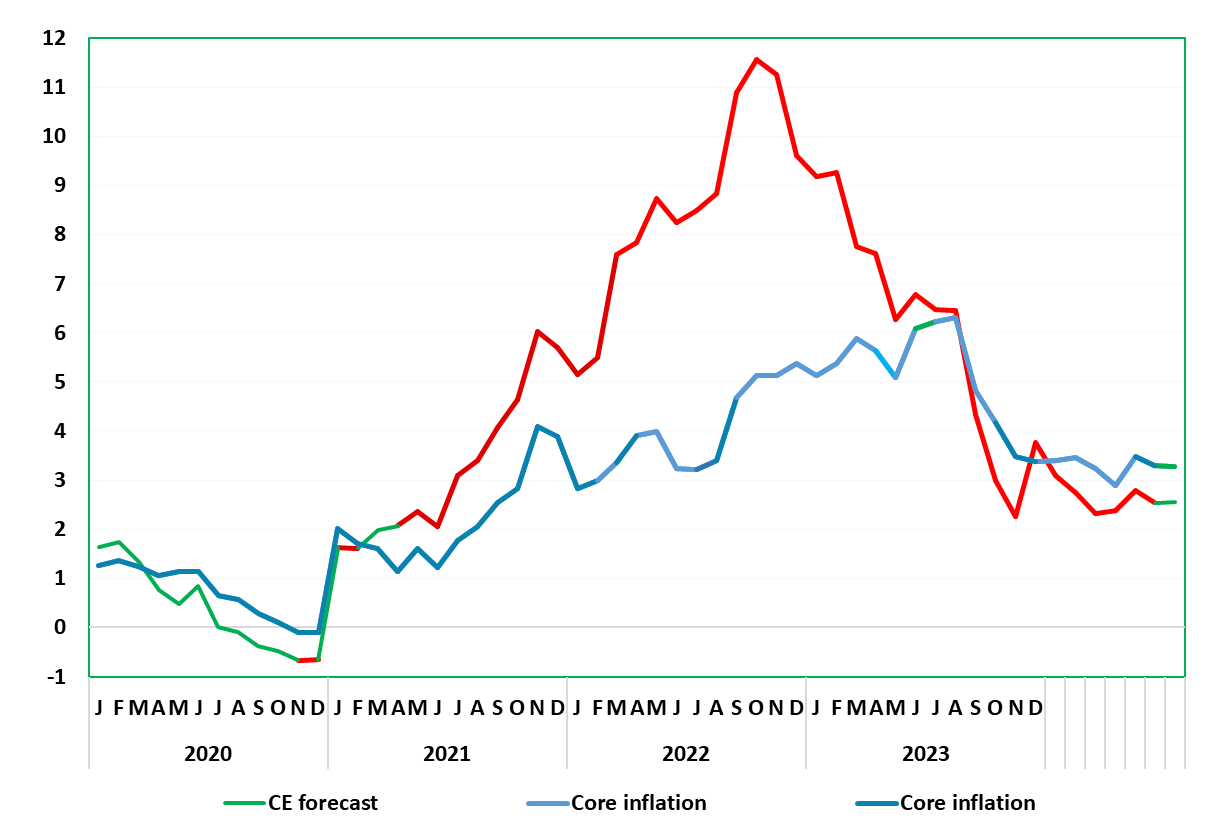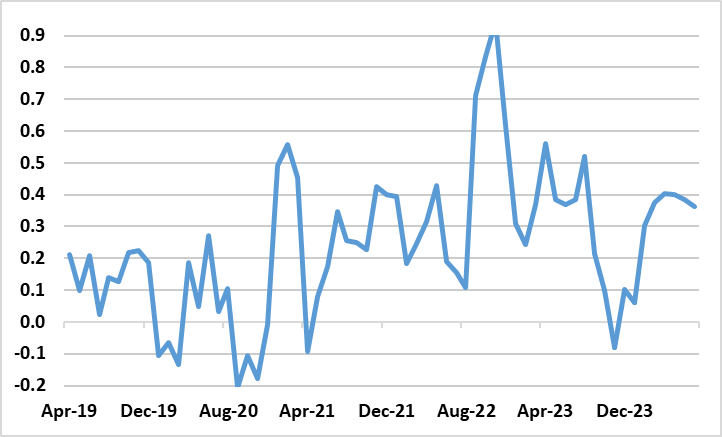German Data Preview (Jul 30): Inflation Stable Ahead of Fresh Fall in Coming Months?
Base effects have caused the German disinflation process not to be smooth and this was even more clearly the case in recent numbers where after a second successive and slightly larger rise in the headline HICP rate occurred rising 0.4 ppt to 2.8% in May was followed by a drop back to 2.5% in June, 0.2 ppt above the recent March low. Stronger service sector inflation and up also from the March low have boosted the headline but will do so less clearly we think in the looming July numbers (Figure 1). Admittedly, this may see a stable reading 2.5% for the headline, but a possible 0.1% drop to 3.2% in the core. Translating this into adjusted HICP terms (Figure 2) suggested the adjusted core having remains above circa-target strength (Figure 2), something we still regard more as noise than fresh trend which may be now reversing.
Figure 1: Inflation Still Bumpy?

Source: German Federal Stats Office, CE
It is unclear to what extent recent services price resilience is due to distortion caused by the early Easter and recent fiscal developments as well as adverse base effects. But adjusted m/m readings for recent months and even our July projection suggest that core rate disinflation may have stalled, albeit at a pace still down from previous rates and largely consistent with 2% target (Figure 2) and where a fresh turning point may be emerging.
Regardless, looking ahead, the disinflation trend is seen continuing, mainly due to slower core goods and energy prices. As a result, headline inflation is likely to fall to around 2% in the autumn but perk back to possibly above 2.5% by end-year due to energy base effects.
Figure 2: Adjusted Core Rate Falling Afresh?

Source: German Federal Stats Office, CE